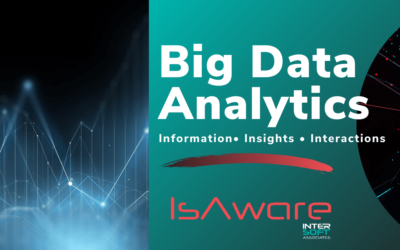Building a successful company today requires the ability to leverage data, technology, and Business Intelligence.
Business Intelligence, or BI, is a cumulative term for the process and infrastructure of collecting, storing, and analyzing data for the purpose of better understanding its potential business impact on both the top and bottom lines. This data is relevant to empowering better and more impactful decision-making.
Often, BI is used as an overarching term to cover the data itself, as well as spreadsheets, reporting software, data mining software, analytics and more. The goal of Business Intelligence is to present multi-dimensional views that allow managers to analyze, iterate, and decide on the next steps at record speed. That is, to ensure that your data is actionable and beneficial for your organization.
Time is everything, but so is accuracy. Business Intelligence combines them both so that decision-makers can respond in real-time.
Let’s explore how BI is connected to key performance indicators (KPIs), data mining and business analytics. This guide will help you understand the three facets of Business Intelligence: Inertia, Insight, and Impact. Let’s get started!
How Does Business Intelligence Help You?
Business strategy can help can and should help make the difference between poor decisions and effective ones. With the right data in place, managers and decision-makers can avoid critical and costly missteps.
Business Intelligence, at the core, is data intelligence – and we have discussed before that data is just another word for information. It is a way of synthesizing and analyzing all relevant information, or data points, and displaying that information in a meaningful way. To achieve this, Business Intelligence relies upon data mining.
Data mining is the process of collecting data and properly analyzing it—digging into the pieces and what they mean. You can have all the data points in the world, but if you do not know what they mean or how they apply to your business, that data is either useless or you need a professional to help you understand how to leverage and exploit that data.
Today we have many different data collection and storage options for managing business data. The cloud is limitless, and tech giants are constantly providing new data-based solutions. Most organizations do not have the ability to weed through millions of data points in the heat of the moment.
That is the whole point of Business Intelligence. The goal is to be able to iterate on strategic data points and make informed decisions, quickly. If you jump out of an airplane, accurate relevant data points serve as your parachute. BI, done properly, gives you that capability.
Business Intelligence asks the following questions, based on the data that you have available:
- What are you currently doing?
- What are you currently focusing on?
- What are you currently not focusing on?
- What does the future hold?
- Where should you be focusing?
Business Intelligence: Inertia
There are two ways to think about Inertia in your business.
- In what direction are you moving?
- Or – In what ways are you not moving at all?
Phrases like ‘we have always done it this way’, and ‘if it was good enough for my predecessor, it’s good enough for me’, and ‘it worked before’ are indicators that your company or its employees are satisfied with the status quo. But in business, there are 2 maxims:
- If you plan on just remaining stagnant, you will go backwards
- Good enough is no longer good enough.
Your competitors, however, are not satisfied with the status quo. They are innovating, iterating, and changing approaches with tweaks that result in accelerated growth and success. Additionally your customers are adjusting to rapid change with higher expectations. What worked three years ago won’t work next week.
If your Business Intelligence processes are not evolving and being updated, everything will pass you by. Your business will remain in the cold, while everyone else sits at the buffet table: new technology, new data mining techniques, new information, new Business Intelligence processes.
Here are some of the categories some companies look at to gauge how well they are doing:
- Revenue
- Marketing
- EBITDA (earnings before interest, taxes, depreciation and amortization)
- Customer engagement
Your growth trajectory is dependent on what you know and what you do. Think of it as running a marathon. You need to know where the starting line is, where the finish line is, and which direction to go. You will do even better if you know where the water stations will be located and where the big hills are on the course so you can plan ahead.
If you do not have the information necessary to pace yourself, you could start slowing down midway through the race. Or, you could run in the wrong direction! Racing a marathon does not matter unless you run on the right course, in the right direction, against the right opponents.
Business Intelligence: Insight
Are you hitting big Key Performance Indicators? How do you actually know?
The answer probably lies in your business strategy. You have set goals for the year and probably have a five-year plan as well—and one of the benefits of Business Intelligence is that it provides the data to tell you the truth.
When leveraging BI tools and software, it’s important to know what you are doing. There are many BI tools available. These include Tableau, Power-BI, Microsoft SSRS and Microstrategy. In order to be effective, you need a solution that works for you—which often requires consulting and custom development.
A successful data management strategy tells you where to look, when to look, and what to do with the data you see. Without a cohesive strategy it is easy to feel overwhelmed with the multitudes of data that you may have.
Each time a customer interacts with content, that is a data point. Here is an example of the data gathered from a simple newsletter sign-up:
- Device type
- Location
- Customer name
- Demographic information
- Email address
- Interests
That is a great deal of data from a single email input. However, without software crafted for storing business data and displaying it in an analytical and actionable format, all you are doing is asking questions.
When it comes to analytics for business, software reporting tools are often balancing competing priorities. These priorities are speed and depth. While many tools can pull quick reports, how accurate are they? What data sets are they prioritizing? With the right professionals on your side, you can prioritize data sets that are important to you accurately and understandably.
The right data sets can indicate the health or efficacy of a process, business department or workflow. This information can help you make informed last-minute pivots when they are necessary.
Business Intelligence: Impact
Business Intelligence as a concept has been around for a long time. On the surface, it is simple—leverage a database and make choices. However, the entire world of BI has exploded in recent years.
Why? Because of improved technology and the continual reduction of mass storage options and costs. Today companies are data-mining like crazy. This frenzied increase in data collection comes from every possible touchpoint, introducing logistical and ethical questions about the potential impact of such data.
Smartphones, wearable technology, and the increased ability to store data in secure cloud databases have also increased the importance and availability of Business Intelligence.
All of this illustrates how Business Intelligence is not optional when it comes to meeting and improving your KPI’s. There is a common phrase in technology development—garbage in, garbage out. Think of it this way in applying GIGO to your business: If your materials are garbage, your output is garbage. You can’t make treasure out of trash, no matter how talented your team is. In order for data to deliver a positive impact for your business, you need to capture the right data for your business needs.
Why BI Matters
High-quality data matters because it directly impacts your company’s output. In this case, output equals customer service and interactions, products, brand strategy decisions and much more.
Even if this output is not concrete, it is controlled by the data you receive and the decisions made from it. The impact of BI is that it provides a strong foundation for your organization’s futurefuture.
Sometimes Business Intelligence is called analytics. There are two types of analytics: descriptive analytics and predictive analytics.
Descriptive analytics describes what has happened and what changes need to be made. On the other hand, predictive analytics forecast changes based on past patterns.
For accurate forecasting and business strategy, descriptive analytics need to be on-point. That is exactly the point of BI tools and software.
Leveraging BI with Custom Software Development
When properly leveraged, BI can transform your growth trajectory. It provides the tools for brands to hit key performance indicators, revolutionize customer service, and capitalize on opportunities.
If you’ve been capturing data but haven’t been taking action on it, if the actions you have been taking with data have not been impactful for your business, or if you are not sure how to get started with meaningful Business Intelligence, we can help! A simple conversation can create a whole new way of thinking for your business strategy.






